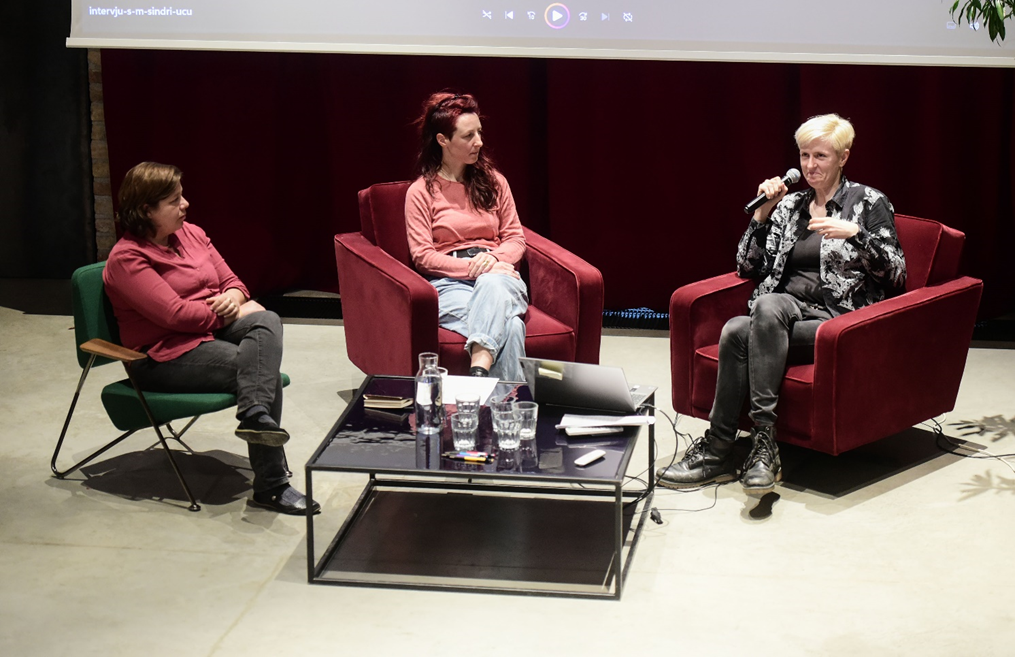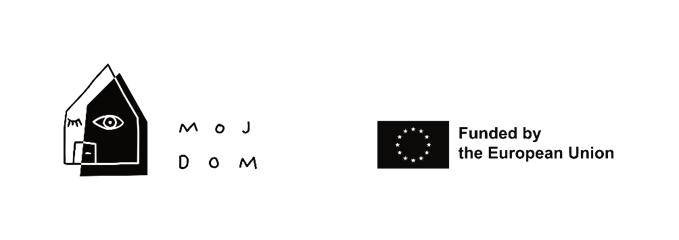SMALL SCHOOL OF THE NINETIES
Djeca devedesetih (Children of the Nineties)
On March 30, 2023, the program “Children of the Nineties” was held.
The program is structured around dialogues about the consequences of wartime events, forced migrations, and profound societal and economic changes on the generations for whom the last decade of the previous century was a period of childhood. To what extent their experiences are similar, how they connected fragments of memories and family stories into meaningful wholes, how these early experiences can influence their life paths and attitudes in adulthood, and why this is important for Croatian society today are some of the questions that the presenters – partly the “children of the nineties” themselves – explored through the presentation of artistic works and interpretations of research interviews, as well as through presentations of academic research on schooling and education, as well as on the pop culture of the nineties.
Program:
Intervju s M. // Umjetnica odgovara. Sindri Uču, novomedijska umjetnica
(Interview with M. // Artist Responds. Sindri Uču, new media artist)
An artistic interpretation in the form of an audio monodrama of an ethnographic, unstructured interview conducted with a representative of the “children of the nineties”. The focus of this interview, with a conversational partner born in the early nineties in a city under shelling, is directed towards the child’s perspective, the position of an unnoticed and uninformed witness who records what is not usually spoken about. By unraveling the themes of home, the research interview weaves a dense fabric of family life in the nineties, where coexistence, interweaving, and tight connections exist: affiliation to a certain political party, undesirable national affiliations, traces of post-traumatic stress disorder, affluence, poverty, and various forms of love.
Kuća ima rogove. Da je dobra, i vuk bi je imao. Ivana Ognjanovac, vizualna umjetnica
(The house has horns. If it were good, even the wolf would have it. Ivana Ognjanovac, visual artist)
The folk proverb in the title served as the starting point for the creation of the visual composition “The House Has Horns, Yet We’re Moving Again,” which the author will present as part of the program. The works address clichés related to home, family, upbringing, social roles/hierarchy (gender, age), and sexuality. They were born from the reinterpretation of personal memories within the context of family heritage and growing up during a time and place colloquially referred to as “before the war,” as well as in the later period of exile in Germany.
Ratne traume, posttraumatski rast i što sve to znači za generacije mladih danas. Razgovor s Gordanom Kuterovac Jagodić, Filozofski fakultet Sveučilišta u Zagrebu
(War traumas, post-traumatic growth, and what all of this means for the youth of today. Conversation with Gordana Kuterovac Jagodić, Faculty of Philosophy, University of Zagreb)
For many in Croatia, childhood was a time of hiding from grenades, attending radio-school, being refugees, and enduring lengthy stays with families struggling to cope with war-induced traumas. We discussed how attempts were made to help children amidst traumatic events, the role of international donors in these processes, potential and expected consequences for the generations of children of the nineties in adulthood, as well as the transformative, empowering potentials of trauma with Professor of Psychology at the Faculty of Philosophy in Zagreb, Gordana Kuterovac Jagodić
Škola kao topos djetinjstva: sjećanja djece devedesetih. Ivana Polić, University of California San Diego, doktorandica
(School as a childhood theme: memories of the children of the nineties. Ivana Polić, University of California San Diego, doctoral candidate)
As the primary educational institution, school plays an important role in the contemporary construction of national identity. In this context, the historiography related to the war in Croatia (1991 – 1995) has largely focused on the content of history textbooks and public debates that accompanied these changes since the beginning of the war. This research is based on the memories of generations that attended primary school in the Republic of Croatia and in the para-state entity of the Republic of Serb Krajina during the war years.
Američka popularna kultura u dječjoj svakodnevici devedesetih. Zlatko Bukač, Odjel za anglistiku, Sveučilište u Zadru
(American popular culture in the everyday lives of the nineties children. Zlatko Bukač, Department of English Studies, University of Zadar)
This presentation was based on analyses of both American and Croatian pop-cultural products from the last decade of the previous century. Drawing on the intersection of autobiographical experiences and cultural studies approaches, the presentation will address possible formations of the “child of the nineties.” It will also raise the question of the role of nostalgia for childhood marked by innocent and naive perceptions of a perfect America in the context of war and post-war Croatia.
Audio memories of the 90s
Gathering audio memories was conducted as part of the program “SMALL SCHOOL OF THE NINETIES: ‘Children of the Nineties’.” It was carried out using specially designed forms in which respondents entered their memories of the soundscape in Croatia during the nineties. Twenty-three forms were completed. Of those, five respondents were born in the nineties, while the others were born before the nineties—one person was an adolescent in 1991, and the rest were children or teenagers at the time. The remembered soundscapes vary depending on the respondents’ age and location during the nineties. Respondents born in the nineties remember the war only as part of family stories, and their recollections are marked by memories of childhood sounds. These include memories of children’s TV shows, parental voices, and similar sounds.
For other respondents, the soundscape is richer and broader, containing phrases from TV, reports from the battlefield, grunge music, noise from cafés, and more. The prominence of certain elements in the soundscape depends on the locations where respondents lived. For those who lived near the battlefield, there is a greater presence of alarms and the sounds of grenades, as well as the noise of shelters and basements, and even the absence of birdsong. Refugees remember the creaking of doors and the calls for food distribution from humanitarian aid workers. Those who spent part of their refugee experience in Germany recall the German pop music of the time as part of the soundscape. They also remember teasing in new environments because of their accent, as well as the development of a new sensitivity to differences between the Croatian and Serbian languages, specifically the ekavian and ijekavian isoglosses.
Some respondents remember their parents’ crying, anger, and swearing. For most respondents born before the nineties, the soundscape of “normal” life or “normal” suffering competed with the soundscape of social trauma. One recurring motif throughout all (or almost all) soundscapes is the figure and voice of Franjo Tuđman. Even in the case of respondents born in the nineties, while his voice may not be directly remembered, there is a recollection of the sirens and the atmosphere associated with the moment of his death.
Funded by the European Union. Views and opinions expressed are however those of the author(s) only and do not necessarily reflect those of the European Union or CERV. Neither the European Union nor the granting authority can be held responsible for them.



Funded by the European Union. Views and opinions expressed are however those of the author(s) only and do not necessarily reflect those of the European Union or CERV. Neither the European Union nor the granting authority can be held responsible for them.
